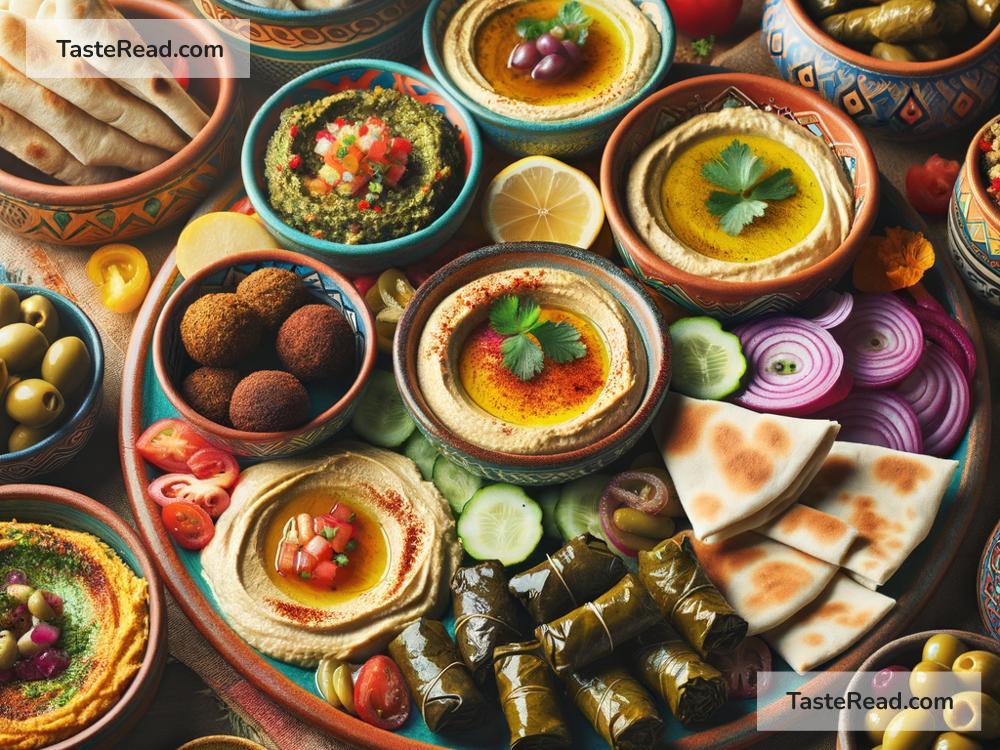Exploring Middle Eastern Mezze Platters and Their Cultural Significance
The Middle East is known for its rich history, vibrant cultures, and, of course, delicious food. One of the most famous dining traditions from this region is the mezze platter. Mezze, which means “snack” or “small dish” in Arabic, is much more than just food—it is a symbol of hospitality, community, and celebration.
What Is a Mezze Platter?
A mezze platter is a collection of small dishes served together, usually as an appetizer. These dishes are full of flavor, color, and variety, making mezze platters a feast for both the eyes and the stomach. Mezze can include dips, spreads, salads, breads, and finger foods. It’s not just about the food—it’s about the experience of sharing it with family and friends.
Some popular items you’ll often find on a mezze platter include:
- Hummus: A creamy chickpea dip blended with tahini, olive oil, garlic, and lemon.
- Baba Ganoush: A smoky eggplant-based dip, also made with tahini, garlic, and lemon.
- Tabbouleh: A fresh, herby salad with parsley, mint, bulgur wheat, tomatoes, and lemon juice.
- Falafel: Crispy fried balls or patties made of ground chickpeas or fava beans.
- Stuffed grape leaves: Rolled grape leaves filled with fragrant rice, spices, and sometimes meat.
- Labneh: A thick, creamy yogurt spread.
- Pita bread: Soft and fluffy flatbread, perfect for scooping up dips and spreads.
- Olives: A variety of marinated olives to add a salty burst of flavor.
- Pickled vegetables: Tangy pickles like turnips or cucumbers that complement the richness of the other dishes.
No two mezze platters are ever exactly alike. Depending on the country, region, or personal taste, the items can vary. For example, in Lebanon and Syria, mezze platters often include kibbeh (spiced meat and bulgur croquettes). In Turkey, you might find dolmas (stuffed grape leaves) alongside cheese and nuts.
The Cultural Significance of Mezze
To truly understand mezze, you have to look beyond the food itself. Mezze is deeply ingrained in Middle Eastern culture and connects people on a personal level. It reflects the importance of hospitality, togetherness, and tradition.
A Gesture of Hospitality
In many Middle Eastern countries, offering mezze is one of the most common ways to welcome guests. Food is considered a way of showing care and respect, and mezze platters embody this spirit. When someone visits your home, serving a mezze platter is a warm, friendly gesture that says, “You are welcome here.”
Celebration and Sharing
Mezze isn’t just about the food; it’s a social experience. It’s meant to be shared with others, encouraging conversation and connection. In Middle Eastern culture, meals are often a communal activity, where everyone gathers around the table, shares stories, and enjoys each other’s company. A mezze platter creates a relaxed and inviting atmosphere, making it perfect for celebrations or family gatherings.
Tradition and Identity
Mezze reflects centuries-old traditions passed down through generations. Each dish tells a story about the land, the people, and their way of life. For example, hummus is thought to have originated in ancient Egypt, while baba ganoush has roots in the Levant. Eating these foods is a way of honoring history and preserving cultural identity.
Mezze Around the World
While mezze originated in the Middle East, its appeal has spread across the globe. Today, mezze platters are enjoyed in many places, often as part of Mediterranean or Middle Eastern-inspired menus. Restaurants and home cooks alike find mezze platters exciting and versatile—they cater to vegetarians, meat lovers, and everyone in between.
Western countries have embraced mezze as a trendy way to serve food. It’s easy to see why—they are colorful, packed with flavor, and perfect for sharing at parties or casual gatherings. Mezze fits well with the growing popularity of small plates and tapas-style dining.
Even though mezze has gone international, it remains an authentic expression of Middle Eastern heritage. It’s more than just food on a plate; it’s a reminder of the values and traditions of the region.
How to Create Your Own Mezze Platter
If you’ve never had a mezze platter, don’t worry! It’s easy to make your own at home. All you need are some fresh, flavorful ingredients, a bit of creativity, and a love for good food.
Start with a few essentials: hummus, baba ganoush, pita bread, and olives. Add in something crunchy like falafel or fried cauliflower. Include a salad such as tabbouleh or fattoush for freshness. Don’t forget pickled vegetables for a tangy kick, and maybe some stuffed grape leaves for variety.
Arrange everything on a large plate or board, and let your guests dig in. The beauty of mezze is its flexibility—you can mix and match dishes based on what you have or what you enjoy.
Conclusion
Mezze platters are a delicious symbol of Middle Eastern hospitality, connection, and tradition. They bring people together over shared flavors and experiences, celebrating both the food and the relationships it fosters. Whether you’re in the Middle East or somewhere far away, the mezze platter is a perfect way to embrace the warmth and generosity of this incredible culture.
So next time you’re planning a meal, consider serving a mezze platter. It’s not just about the food on the plate—it’s about the joy of sharing it with others. And that, in the end, is what mezze is all about.


